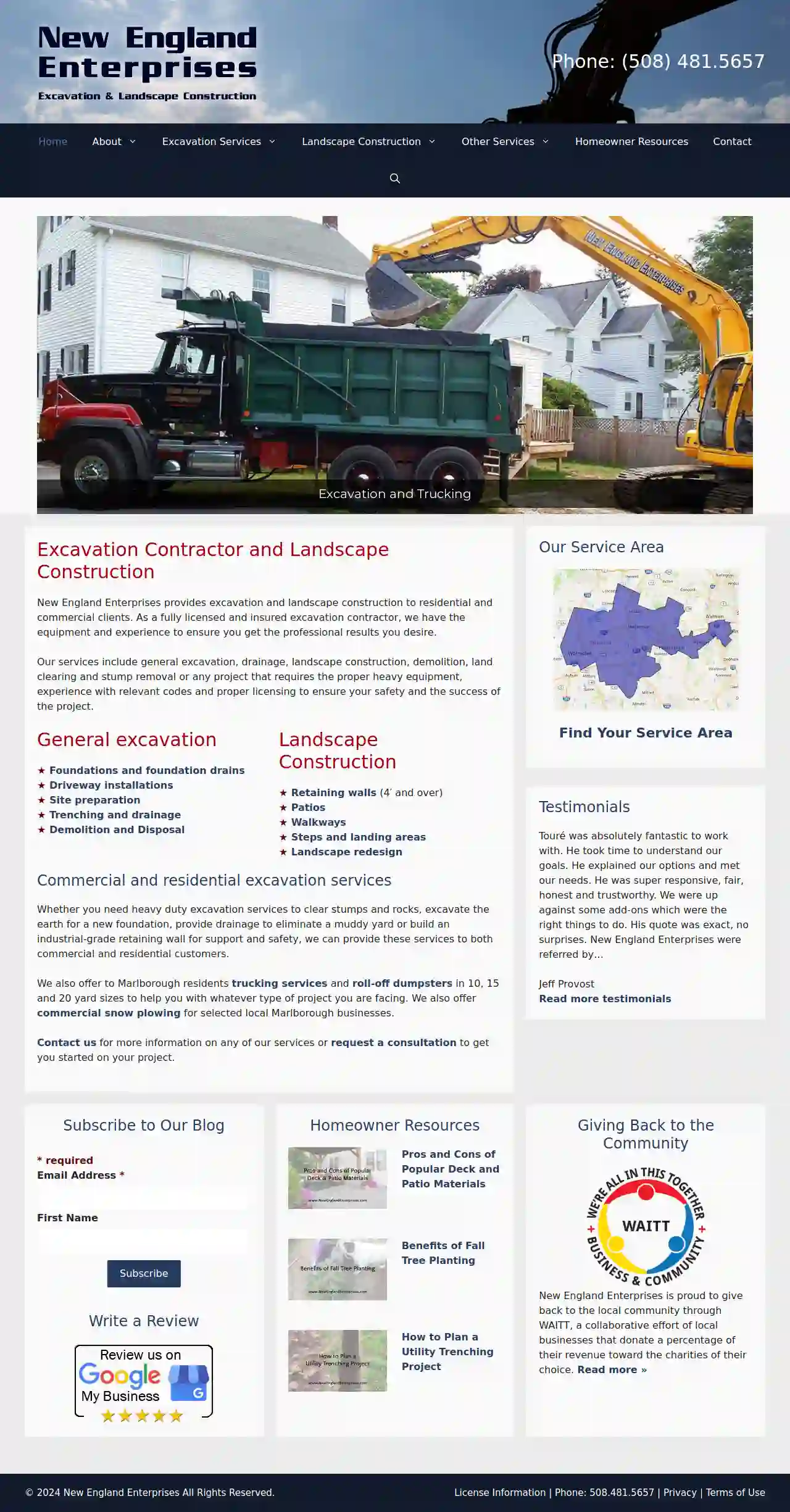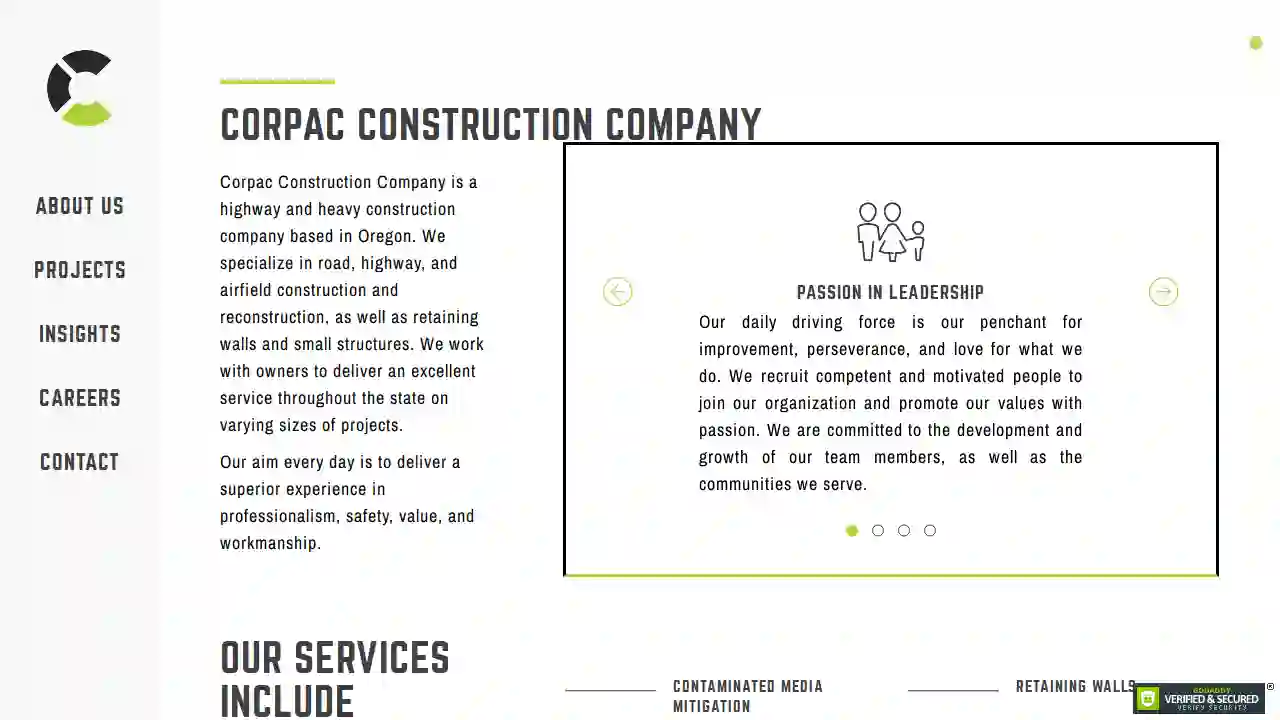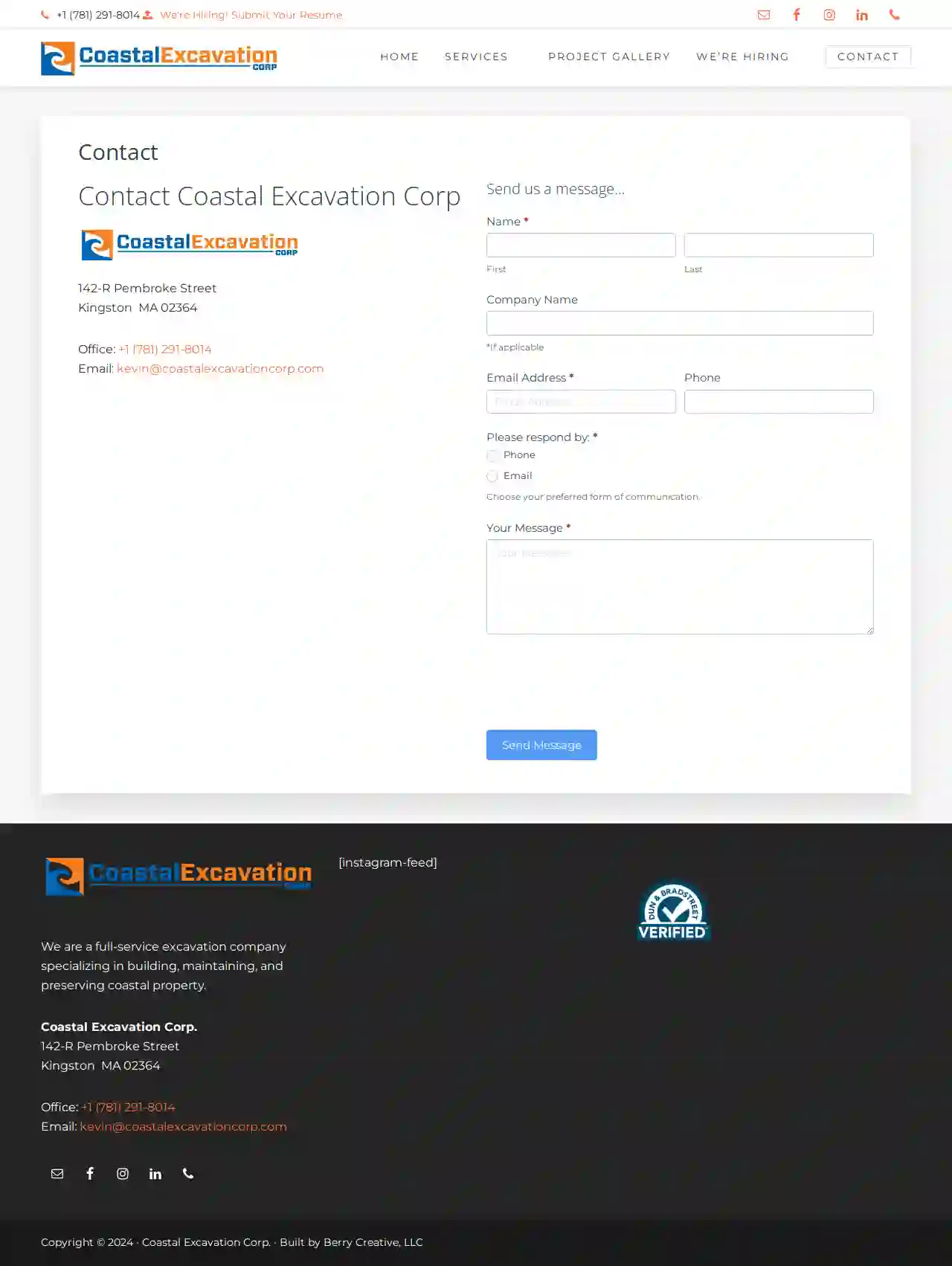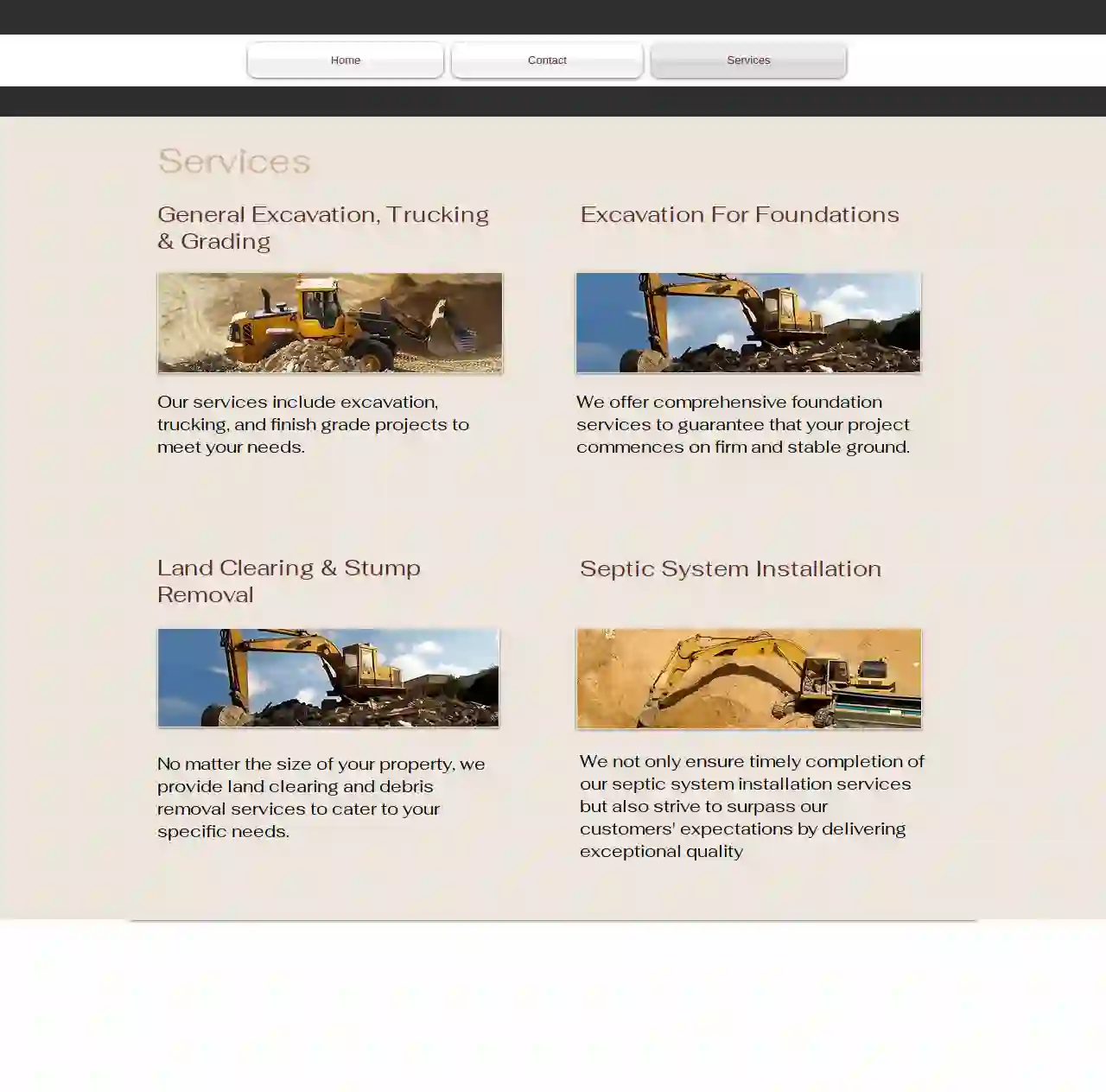Excavation Contractors Rye
Find Excavation Services in Rye
Get up to 3 Excavation Companies quotes for your project today! Compare profiles, reviews, accreditations, portfolio, etc... and choose the best service.

New England Enterprises
510 reviewsPlymouth, USExcavation Contractor and Landscape Construction New England Enterprises provides excavation and landscape construction to residential and commercial clients. As a fully licensed and insured excavation contractor, we have the equipment and experience to ensure you get the professional results you desire. Our services include general excavation, drainage, landscape construction, demolition, land clearing and stump removal or any project that requires the proper heavy equipment, experience with relevant codes and proper licensing to ensure your safety and the success of the project. Whether you need heavy duty excavation services to clear stumps and rocks, excavate the earth for a new foundation, provide drainage to eliminate a muddy yard or build an industrial-grade retaining wall for support and safety, we can provide these services to both commercial and residential customers. We also offer to Marlborough residents trucking services and roll-off dumpsters in 10, 15 and 20 yard sizes to help you with whatever type of project you are facing. We also offer commercial snow plowing for selected local Marlborough businesses. Contact us for more information on any of our services or request a consultation to get you started on your project.
- Services
- Why Us?
- Testimonials
- Gallery
Get Quote
Butts Bros Excavation LLC
51 reviewsNew Milford, 06776, USExcellence In Excavation When the people in our community need the expertise and professional oversight of an excavation contractor, they know to contact Butts Bros Excavation LLC. Whether you need someone to clear the land on a worksite, dig out a pond, or excavate for a home foundation, we can help you. Homeowners and skilled builders alike look to us for all their excavating needs—and the reasons why are obvious. Whether you’re most concerned with quick turnarounds, reasonable rates, or excellent results, you will surely love our approach to excavation. Book our services today for your upcoming project. Call (203) 994-5264 to schedule your consultation. Making Excavation Look Easy We are high-demand excavation contractors. Not a day goes by where we are not doing earthwork, digging trenches, or aiding the development of a new property. Over the years, we have come to understand the finer points of excavation better than the rest. We Serve the Customer We work in accordance with the standards of our trade, make no mistake. That said, we also believe in serving the customer every step of the way. We will listen to your requests, answer your questions, and address any concerns you might have. In the end, you get quality results and a customer experience like no other. Ready for Every Excavation Project Do you want to dig out a pond in the backyard of your home? Are you looking to clear a piece of property of large rocks and other masses? We can help you. Between our unparalleled expertise and vast storehouse of equipment, we can undertake just about any excavation project. Some of the services we offer include: Basement excavation Pond digging and filling Site clearing Trenches and troughs Foundation digging Grading And more Aiding Residential and Commercial Excavation Projects Since our company’s inception, we have had the opportunity to assist in projects of all varieties, from home building to commercial landscaping and everything in between. We tackle projects of all sizes—and what’s more, we treat every project with the seriousness it deserves. Would you like to learn a little more about us? Call our offices today. Your Excavation Is Always a Success with Us There are a lot of moving parts, crew members, and ongoing projects on any given worksite.
- Services
- Why Us?
- Gallery
Get Quote
Corpac Construction Company
1.67 reviewsPortland, USCorpac Construction Company Corpac Construction Company is a highway and heavy construction company based in Oregon. We specialize in road, highway, and airfield construction and reconstruction, as well as retaining walls and small structures. We work with owners to deliver an excellent service throughout the state on varying sizes of projects. Our aim every day is to deliver a superior experience in professionalism, safety, value, and workmanship. PASSION IN LEADERSHIP Our daily driving force is our penchant for improvement, perseverance, and love for what we do. We recruit competent and motivated people to join our organization and promote our values with passion. We are committed to the development and growth of our team members, as well as the communities we serve. VALUES We believe in a team-integrated, partnered approach to projects with our clients, personnel, and trade partners. We believe in the development of technologies, processes, and methodologies informed by data and research-proven results. We believe teams rich in diversity and inclusion are the strongest. We believe leadership that supports work to life balance, a learning environment, and recognition drive productivity. SAFETY FIRST We are committed to sustaining a culture of safety by providing the necessary personnel, tools, training, and support to all of our team members. WORK HARD? SO DO WE. Corpac seeks individuals that are hardworking, dependable, and team-oriented for our main office and job sites throughout the state of Oregon. Corpac is a team of strong individuals who thrive working collectively together to get the job done at a high level of execution. We pride ourselves in our core values that we incorporate into our work every day. CARRYING ON A TRADITION IN HEAVY CIVIL CONSTRUCTION OVER FORTY YEARS LONG AND COUNTING Our heritage in the construction industry is one we are driven to honor every day. It is one of the elemental forces behind our leadership. There is pride in our craft at every level of the organization and gratitude for the role we play in the Pacific Northwest marketplace and American economy. Old school ethics; new-school vision. OLD SCHOOL VALUES; NEW SCHOOL VISION Corpac is built on the foundation of timeless business ethics: integrity, reliability, trust, and respect. Our modern approach is to build on this foundation and continually improve through research, education, innovation, and vision. Respect is the cornerstone of our relationships.
- Services
- Why Us?
- Accreditations
- Gallery
Get Quote
Orlando Excavation Corp.
54 reviews155 Main Street, Southborough, 01722, USWelcome to Orlando Construction Corp. We take a personal, customized approach with our customers. We are a renown local excavating contractor based in Southborough, MA with over 20 years of experience. Whether it’s a complete site grading, a new septic install, demolition of a large commercial or residential structure, installation of drainage or catch basins, a large retaining wall, a new asphalt parking lot or driveway or a large hardscape project, we take great care and pride in the work we do for you. We are equipped to meet all your project management needs and are committed to delivering the best in quality, service, safety and reliability our clients expect and deserve. The Right Choice… Renown Industry Leader Honest and Trustworthy Service Over 20 Years Experience Free Consultations Fully Licensed, Insured & Bonded We value our customers and are dedicated to serving you See What Our Clients Are Saying… “I am very pleased with the sitework Orlando Construction helped us with on our house lot! Thanks again to Orlando Construction for the great work and for answering all of our questions and concerns along the way. I will definitely be using Orlando Construction again and will recommend them without hesitation!” – Boxborough, MA
- Services
- Why Us?
- Our Team
- Testimonials
- Gallery
Get Quote
Chris Stupak Property Maintenance and Excavation
533 reviewsMiddlebury, 06762, USAbout Us Chris Stupak Property Maintenance is a full-service drainage and excavation company that is owner-operated and provides quality services to residential and commercial clients in Middlebury, CT, and around. We offer a wide range of services that include drainage, excavation, lawn installation, snow removal, grading and more. We are committed to providing our clients with exceptional service and outstanding results. What we are best at We are a team of experienced professionals who are dedicated to providing our clients with the highest quality services. We use the latest equipment and techniques to ensure that all of our projects are completed to the highest standards. We are also committed to providing our clients with excellent customer service. We are always available to answer your questions and address your concerns.
- Services
- Why Us?
- Testimonials
- Gallery
Get Quote
Consigli Construction Co Inc
4.720 reviews100 Cummings Center, Suite 2200, Beverly, USOur Story A history rooted in tradition, a future led with vision. Learn More > Who We Are A fourth generation company founded in 1905, Consigli offers the strength and stability of a large construction manager and the flexibility of a start-up. Our people love what they do and it shows—in their entrepreneurial spirit, in their desire to create environments that strengthen our communities, in the enduring relationships they build and in the pride they take in their craft. A Legacy Built on Accountability Consigli was founded upon the principles of dedication, hard work and commitment to craft. As we evolve, these things will never change. See the Story > Our People, Our Difference We don’t just assign people to projects—we challenge them to learn, lead, teach, problem-solve and rise to every occasion. Meet the People Who Make It Work > Projects That Move Us It’s our purpose to be builders—it’s ingrained in who we are. We create environments and relationships that strengthen our communities and enrich the ways people live, work, learn, heal and play. Let’s Get to Work >
- Services
- Why Us?
- Gallery
Get Quote
Excavation Plus Inc
48 reviews85 Bethany Rd, Monson, 01057, USExcavation Plus Excavation Plus is a trusted name in the Monson, MA area, known for our quality work, reliability, and exceptional service. We specialize in a wide range of services, including septic system installations, house site excavation, sewer and water installations, demolition, drainage work, small road extensions, commercial snow plowing, and sanding. Our Services We are committed to providing our clients with the highest quality workmanship and customer service. Our team of experienced professionals is dedicated to completing your project on time and within budget. We are fully licensed and insured, and we are proud to be a member of the Better Business Bureau.
- Services
- Why Us?
- Gallery
Get Quote
Fleury Excavation LLC
4.916 reviewsWaterbury, USWelcome to Fleury Excavation At Fleury Excavation LLC, we specialize in providing top-quality excavation services. From residential to commercial projects, our team has the expertise and equipment to handle any excavation job. We pride ourselves on our attention to detail and commitment to customer satisfaction. Contact us today to learn more about our services. Fully licensed and Certified Our team of professionals is 100% licensed and certified ready to tackle every and any project.
- Services
- Why Us?
Get Quote
Coastal Excavation Corp
142-R Pembroke Street, Kingston, 02364, USWelcome to Coastal Excavation Corp. Site Development • Landscape Construction • Property Management A full-service excavation company with over 20 years experience working to develop, repair and preserve our precious New England coastline. We face the challenges Mother Nature brings to coastal living What We Do We offer a broad range of coastal management solutions. Based in Duxbury, Massachusetts we serve towns up and down the New England Coastline going wherever our services are needed. Shoreline Construction Landscape Construction Laser Grading Site Development Commercial Property Management Coastal Conservation & Repair There’s Always Something Awesome Going On at Coastal Excavation Corp Our team has a deep respect for Mother Nature and a passion for addressing the challenges she sends our way. Kevin Knippenberg President & Owner Contact Us Today for a Free Consultation We offer a wide range of services. Wondering if we're right for your project? Get in touch and tell us about it. Give Us a Call
- Services
- Why Us?
- Our Team
- Gallery
Get Quote
Coastline Excavation Plymouth, Ma
51 reviewsPlymouth, USCoastline Excavation: Your Trusted Partner for Excavation, Trucking, and Grading Coastline Excavation is a reputable company dedicated to providing high-quality excavation, trucking, and grading services to meet your project needs. We understand the importance of a solid foundation for any construction project, and our team of experienced professionals is committed to delivering exceptional results. From initial site preparation to final grading, we handle every aspect of your project with precision and care. Our modern equipment and skilled operators ensure efficient and timely completion, minimizing disruption to your schedule. We take pride in our commitment to customer satisfaction. Our team is dedicated to providing clear communication, competitive pricing, and a personalized approach to every project. We work closely with our clients to understand their specific requirements and ensure their complete satisfaction.
- Services
- Why Us?
- Gallery
Get Quote
Over 22,076+ Excavation Contractors registered
Our excavation providers operate in Rye & surroundings!
ExcavationHQ has curated and vetted Top Excavation Businesses near Rye. Find a top & trustworthy pro today.
Frequently Asked Questions About Excavation Contractors
- Excavations Deeper Than a Certain Depth: This varies by jurisdiction, usually around 5 feet.
- Excavations Near Utilities: Digging near buried utilities (gas, water, electric) often requires permits and utility locates to prevent damage.
- Excavations Affecting Public Property: Projects impacting sidewalks, roads, or other public areas typically require permits.
- Excavations in Environmentally Sensitive Areas: Projects in wetlands, floodplains, or other sensitive areas might need special permits.
- Project Type and Size: Ensure the contractor has experience handling projects similar to yours in scale and complexity.
- Reputation and Reviews: Check online reviews and testimonials, and request references from previous clients.
- Licensing and Insurance: Verify that the contractor is properly licensed and insured to protect you from liability.
- Equipment and Resources: Confirm that they have the necessary equipment and resources for your project's needs.
- Communication and Transparency: Choose a contractor who communicates clearly, provides detailed estimates, and keeps you informed throughout the project.
- Safety Record: Inquire about their safety protocols and track record to ensure a safe work environment.
- Price: While price is important, it shouldn't be the only deciding factor. Balance affordability with experience, reputation, and quality of service.
- Topsoil Removal: Stripping the fertile topsoil layer from a site, often preserving it for landscaping.
- Trench Excavation: Digging long, narrow trenches for utilities (pipes, cables) or foundations.
- Basement Excavation: Removing earth to create a space for a basement beneath a structure.
- Pool Excavation: Digging a precise hole for installing a swimming pool.
- Roadway Excavation: Removing earth and preparing the ground for road construction.
- Demolition Excavation: Clearing debris and preparing the site after demolition.
- Channel Excavation: Creating channels for drainage or irrigation.
- Determine the Area: Measure the length and width of the area you want to fill. Multiply them to get the area in square feet (or meters).
- Determine the Depth: Measure the difference between the existing grade and the desired grade (how much you need to raise the ground). This is the depth of fill required.
- Calculate Volume: Multiply the area (step 1) by the depth (step 2) to get the volume in cubic feet (or meters).
- Account for Compaction: Fill dirt compacts when it settles, so add 10% to 25% to the calculated volume to account for compaction. The exact percentage depends on the type of fill material.
Do I need a permit for excavation?
How do I choose the right excavation contractor for my project?
What are the different types of excavation?
How do I calculate how much dirt I need for fill?
Do I need a permit for excavation?
- Excavations Deeper Than a Certain Depth: This varies by jurisdiction, usually around 5 feet.
- Excavations Near Utilities: Digging near buried utilities (gas, water, electric) often requires permits and utility locates to prevent damage.
- Excavations Affecting Public Property: Projects impacting sidewalks, roads, or other public areas typically require permits.
- Excavations in Environmentally Sensitive Areas: Projects in wetlands, floodplains, or other sensitive areas might need special permits.
How do I choose the right excavation contractor for my project?
- Project Type and Size: Ensure the contractor has experience handling projects similar to yours in scale and complexity.
- Reputation and Reviews: Check online reviews and testimonials, and request references from previous clients.
- Licensing and Insurance: Verify that the contractor is properly licensed and insured to protect you from liability.
- Equipment and Resources: Confirm that they have the necessary equipment and resources for your project's needs.
- Communication and Transparency: Choose a contractor who communicates clearly, provides detailed estimates, and keeps you informed throughout the project.
- Safety Record: Inquire about their safety protocols and track record to ensure a safe work environment.
- Price: While price is important, it shouldn't be the only deciding factor. Balance affordability with experience, reputation, and quality of service.
What are the different types of excavation?
- Topsoil Removal: Stripping the fertile topsoil layer from a site, often preserving it for landscaping.
- Trench Excavation: Digging long, narrow trenches for utilities (pipes, cables) or foundations.
- Basement Excavation: Removing earth to create a space for a basement beneath a structure.
- Pool Excavation: Digging a precise hole for installing a swimming pool.
- Roadway Excavation: Removing earth and preparing the ground for road construction.
- Demolition Excavation: Clearing debris and preparing the site after demolition.
- Channel Excavation: Creating channels for drainage or irrigation.
How do I calculate how much dirt I need for fill?
- Determine the Area: Measure the length and width of the area you want to fill. Multiply them to get the area in square feet (or meters).
- Determine the Depth: Measure the difference between the existing grade and the desired grade (how much you need to raise the ground). This is the depth of fill required.
- Calculate Volume: Multiply the area (step 1) by the depth (step 2) to get the volume in cubic feet (or meters).
- Account for Compaction: Fill dirt compacts when it settles, so add 10% to 25% to the calculated volume to account for compaction. The exact percentage depends on the type of fill material.